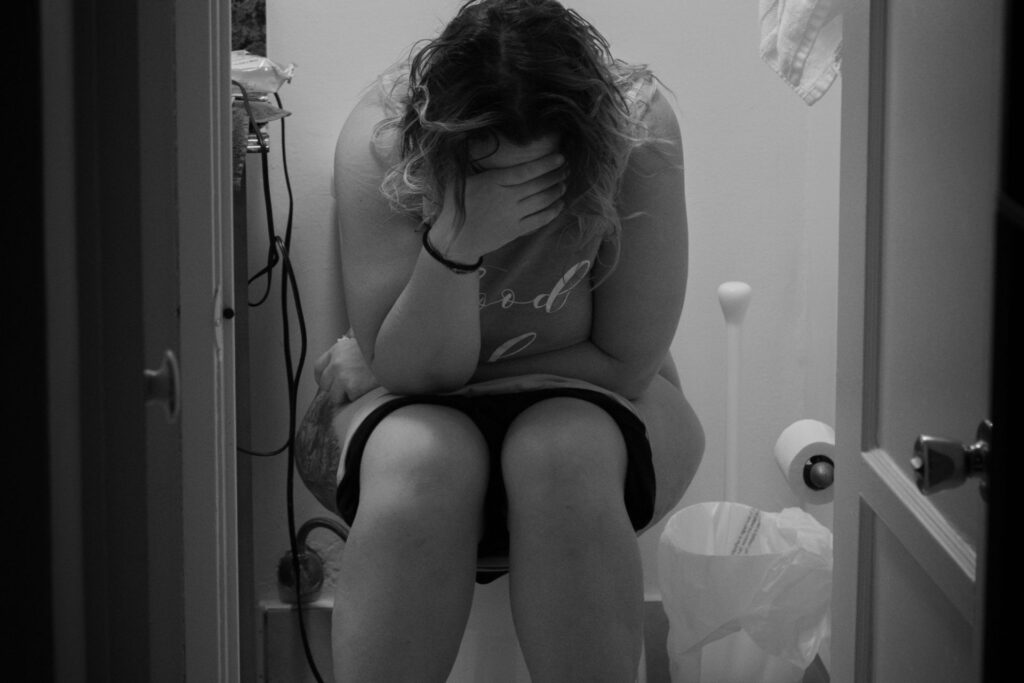If you're expecting a baby, knowing the stages of labour will help you to better understand where you are in the childbirth process. Or, if someone you love is pregnant and you're going to be in the delivery room during delivery, having an understanding will help you to offer educated support.
One of the hardest parts of pregnancy is not knowing what to expect when it comes to labour and delivery. The experience varies so much from person to person and most parents will agree that pregnancy and labour can look different from one baby to the next. Most pregnant people will go through 12 to 24 hours of labour for their first babe, while subsequent labours usually take eight to 10 hours.
What you can do is try to prepare by reading books or taking prenatal classes to learn strategies to hopefully make things easier for you and your partner. This can include writing a birth plan, learning breathing exercises and labouring positions, choosing support people, and researching information about pain interventions, hydrotherapy, etc. Some people may find it reassuring to talk to others who have been through it, but remember that most people share the worst or hardest parts, so be mindful.
There are three stages of labour: The first is the dilation of the cervix; the second is the birth of the baby; and the third involves the delivery of the placenta. Here’s what to expect in the stages of labour:
The First Stage of Labour
The first stage of labour is typically the longest and the most difficult. (That’s a good thing: It only gets easier after this!) It’s when the cervix begins to thin and dilate to about 10 cm. Because so much happens in this stage, it’s actually divided into three parts.
Part One: Early Labour
The earliest signs of labour can actually start days or even weeks before your actual delivery date. Some things to look out for to indicate that you’re in the final stretch include Braxton Hicks contractions, losing your mucus plug, lightening (when the baby drops and rests on your pelvis) and pinkish discharge or even blood (this is known as the bloody show). No need to rush to the hospital just yet; true labour begins when you start having regular contractions.
What to do: Put your feet up and relax! You’ll want to be as well rested as possible before the big event—it’s not called labour for nothing. Your contractions at this point should still be relatively mild but once they start to occur more regularly and the pain increases, use a stopwatch to time how far apart they are and how long each one lasts. Stay well hydrated but make frequent bathroom trips; you don’t want your bladder too full or too empty.
Part Two: Active Labour
Once your contractions are lasting around 60 seconds and occur every four or five minutes for about an hour, it’s go time. In this stage, your contractions will continue to get stronger and closer together as the cervix dilates faster. Don’t forget to grab your hospital bag on the way out!
What to do: Now is the time to listen to your body and do what feels good. If you feel better moving, walk around the room. Try a warm bath (if your water hasn’t broken) or shower. Seek the support of your support person, whether you’re looking for encouraging words, a massage, a hand to hold or breathing techniques. Do you need pain relief? An epidural can be given at almost any stage of labour, except when you’re close to delivering.
Part Three: Transitions
You’re almost there! At this point, your cervix is almost fully dilated and your contractions peak. It’s normal to experience nausea/vomiting, hot or cold flashes, trembling or your arms/legs and leg cramps. The baby is usually down in the pelvis at this point, which may put pressure on your rectum and can cause the urge to push. If you do feel the need to push, let someone know; you want to ensure you’re fully dilated first.
What to do: Because the contractions are so fast and strong, it might be hard to rest in between each one. Be sure to keep your support person and delivery team aware of what you need. It may be helpful to sip cold water or chew on crushed ice; a cold compress on your forehead can also provide some relief.
The Second Stage of Labour
Get ready to meet the newest member of your family! This stage is when the delivery actually happens; it can last a few minutes to a few hours.
Now that you’re fully dilated, your body might feel strong urges to push; your doctor or midwife will ensure you’re ready. If you don’t feel the need to bear down, your caregiver will help to coach you along the way; some women don’t feel that pressure, especially if they’ve had an epidural. Each contraction (in combination with your pushing), helps to move the baby further down the birth canal.
You may also experience a burning or stinging sensation as your vagina and perineum stretch; don’t worry, this usually only lasts a few minutes. Once the baby begins crowning, the scalp becomes visible and with each push, more and more of the head can be seen. Want a glimpse? Most labour and delivery units will have a mirror on hand for you to have a look.
Your caregiver may ask you to slow or even stop pushing for a short time; a slow and gentle birth helps you to stretch gradually and can help to decrease the risk of tearing. As your little one descends further, more of the head comes out and then their face is finally visible; your doctor or midwife may choose to suction the mucus from their nose and mouth now. The next contraction will be the final push to release their shoulders and body. Congrats! You did it!
The Third Stage of Labour
We know: You’re exhausted, thrilled and maybe a bit overwhelmed. You’ve got a tiny new human to love but you’re not quite finished. A few minutes post-birth, contractions will allow the placenta to separate from the uterine wall. Once your doctor or midwife confirms the separation, they’ll have you give a gentle push to help deliver the placenta; for most people, this is neither difficult nor painful, and it typically only lasts around five minutes.
In the meantime, your babe will be close by getting cleaned off and wrapped up to stay warm. This is also when they are typically measured and an Agpar test (used to determine the heath of a baby based on their heart rate, breathing, skin colour, muscle tone and reflexes) is administered.
It’s time to get your snuggle on! Now your little one will be placed on your chest skin to skin to help them to stay warm and regulate their temperature. It also comforts them—they already recognize your voice and smell. And it encourages them to start breastfeeding. It has also been shown to help to stabilize their heart rate, breathing, blood pressure and glucose levels, as well as lower their risk of infection.
Experts recommend doing skin to skin for at least the first one to two hours after babe is born. Who else does it benefit? You! Studies show a decreased risk of postpartum anxiety and depression, promotes bonding and also helps you to pick up on baby’s cues. But your partner can also take part, because you've definitely earned the rest.










